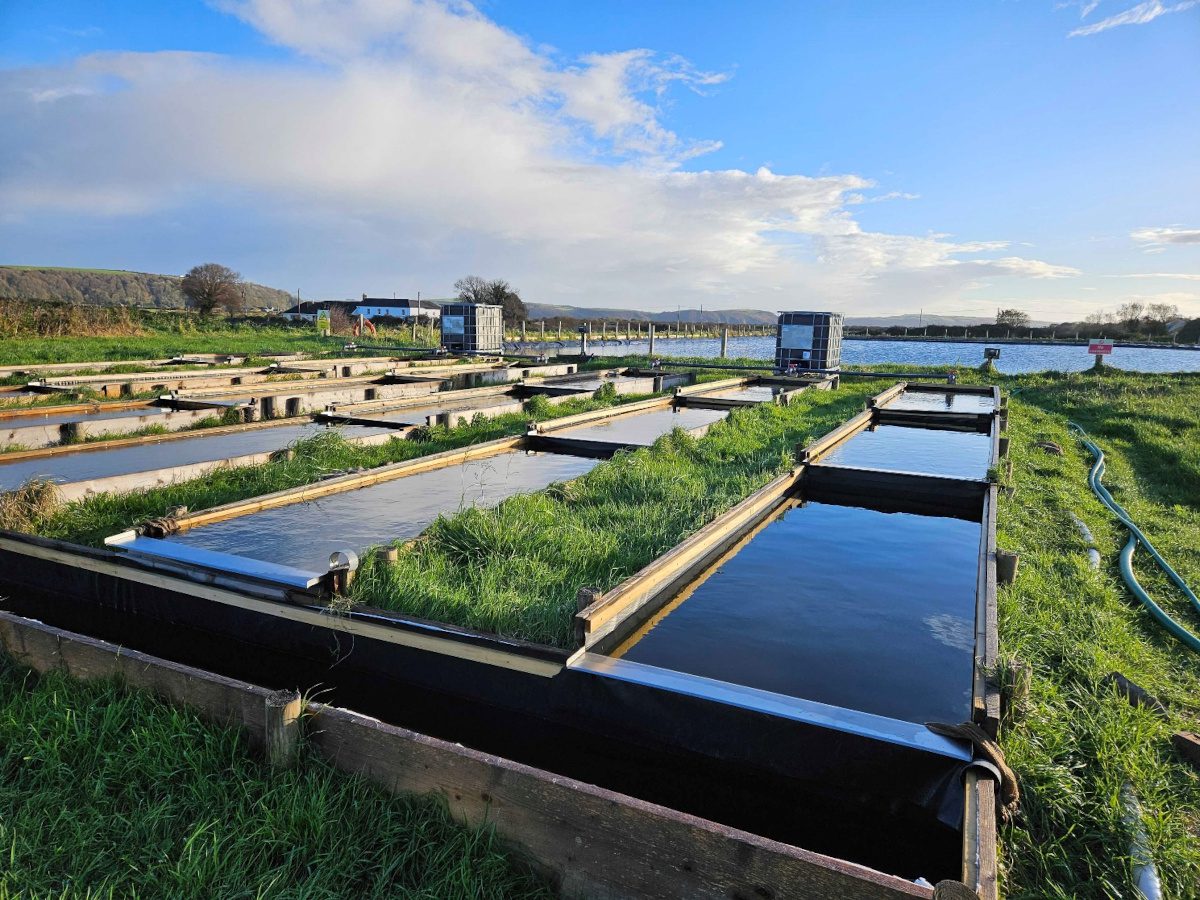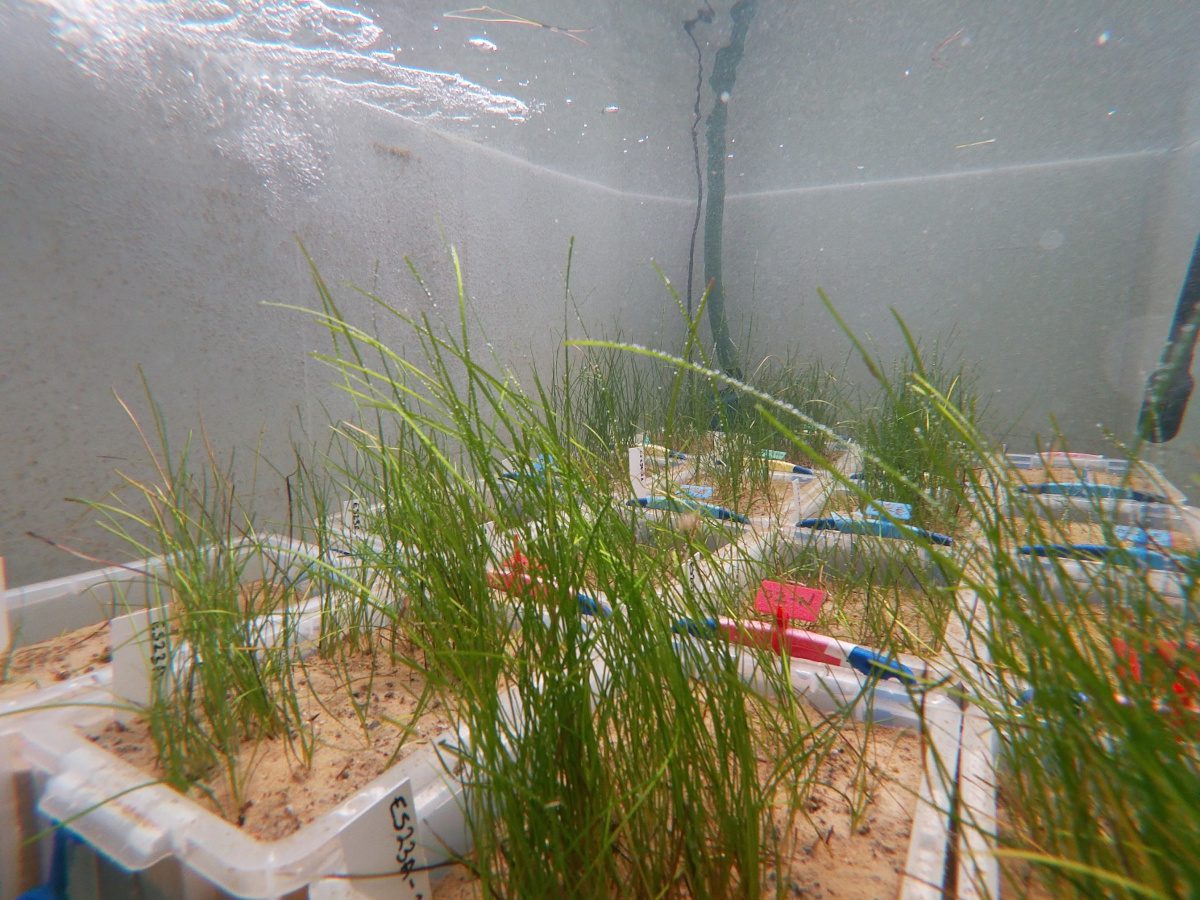
A new Welsh nursery is at the forefront of a mission to restore the UK’s lost seagrass meadows, says the group behind it. The project aims to equip organisations and communities with the tools to bring back biodiversity and support CO2 removal from the atmosphere by restoring these habitats. As much as 92% of the UK’s seagrass meadows has been lost since 1936.
Salix, an RSK Group company, is carrying out development work near Laugharne, Carmarthenshire, in partnership with Project Seagrass, whose work has attracted support from international environmental and climate change groups and which counts UK band Coldplay among its patrons. The goal is to be able to grow and supply seagrass plants and seed for restoration schemes throughout the UK. There is an increasing realisation that seagrass plays a major role in biodiversity support and alleviating the climate emergency.
The project is taking place in a once-abandoned aquaculture site. Salix and Project Seagrass have invested in establishing the seagrass nursery on an inland site, and the nursery is supported by an Ofwat Innovation project. The UK’s goal is to restore 30 km² of seagrass by 2030, creating thriving seagrass meadows and bringing national benefits, including increased biodiversity, carbon sequestration, improved human wellbeing and cleaner, healthier seas. The availability of seagrass plants and seed is critical, as is advancing the science behind seagrass restoration, if seagrass meadows are to be restored at scale.
Salix Technical Director David Holland said: “A vital part of this ambitious goal to rejuvenate seagrass meadows around our coastline has been the development of a seagrass nursery facility to supply seeds and mature plants to projects throughout the UK. Without a reliable supply of local provenance seed and mature seagrass plants, restoration efforts will be limited.
“Growing seagrass at this scale had never been done before in the UK. We were the first nursery to work in this area, and the project is constantly evolving and expanding. We have housed all the seeds for Project Seagrass projects, and this year (2023/24) we are housing more than 1.4 million seeds from locations around the UK, which will contribute to restoration efforts.
“We have plans to establish extensive seagrass plants in outdoor ponds near our propagation polytunnel and are really pleased with initial successes and thriving adult plants.”
Salix is also growing freshwater pond plants and is the UK’s only nursery growing salt marsh plants on a commercial scale.

David said: “Alongside our own project work, we would like to use the centre to support and help others in their work to restore seagrass. We can do this by supplying seagrass seeds, plants and guidance to other community and institution-led restoration projects across the UK. This will empower other organisations and communities and create a bit of a seagrass movement for the UK. That’s the key to achieving real success at scale, which will help us to achieve really significant climate change mitigation.”
The Project Seagrass vision is to create a hub for international collaboration, research, knowledge sharing and support for seagrass nurseries and restoration. Project Seagrass is a founding member of the Global Seagrass Nursery Network, an initiative that allows it to regularly communicate and contribute to groundbreaking seagrass nursery research, which acts as an open-source guide to developing seagrass nurseries internationally.
Project Seagrass Founding Director and Chief Scientific Officer Richard Unsworth said: “As we lose our seagrass, we lose the species that make this habitat their home, including some of the UK’s largest commercial fisheries species that rely on seagrass meadows as nursery grounds. This nursery gives us an opportunity to reverse the decline and restore this critical habitat, preserving the numerous benefits that seagrass meadows provide to people and the planet.
“The Project Seagrass nursery is now the ‘go to’ for nursery developments elsewhere, with regular requests from international parties for visits to try to improve or set up their own facilities using the same methods.”






